Protecting Culebra's Coral Reefs
NOAA Ocean Podcast: Episode 42
Healthy coral reefs are amongst the most biologically diverse, culturally significant, and economically valuable ecosystems on Earth. In this episode, we speak with Lisa Vandiver, a Marine Habitat Restoration Specialist with NOAA’s Restoration Center and Rob Ferguson, a watershed management specialist with NOAA’s Coral Reef Conservation Program, to learn about how NOAA works alongside local partners on the island of Culebra to protect and restore the coral reef ecosystems and reduce the impacts of pollution.
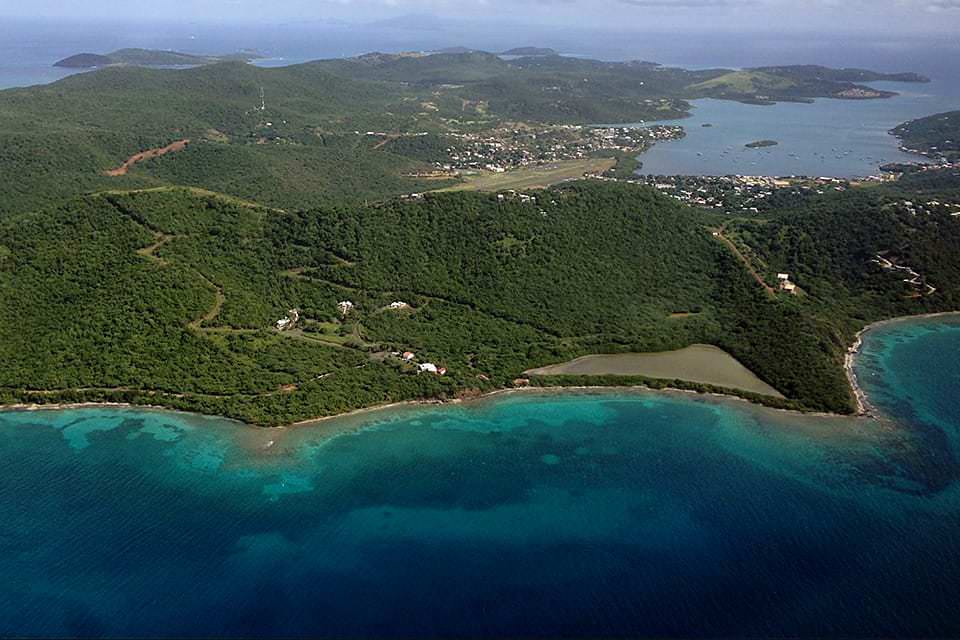
Aerial view of the island of Culebra in Puerto Rico.
Transcript
HOST - This is the NOAA Ocean Podcast. I’m Marissa Anderson.
Located about 17 miles off the north east coast of Puerto Rico, lies the tropical island of Culebra. In case this question comes up during a trivia competition, Culebra in Spanish means “serpent.” Known for its pristine beaches and crystal blue waters, this idyllic paradise is also home to coral reef ecosystems. However, between 1997 and 2003, coral in some nearshore locations of Culebra declined by 30 percent. Research suggests that the decline in coral may be associated with increased land-based sources of pollution resulting from recent coastal development. In response, NOAA and their partners have spent the last decade addressing the pollution threats on Culebra.
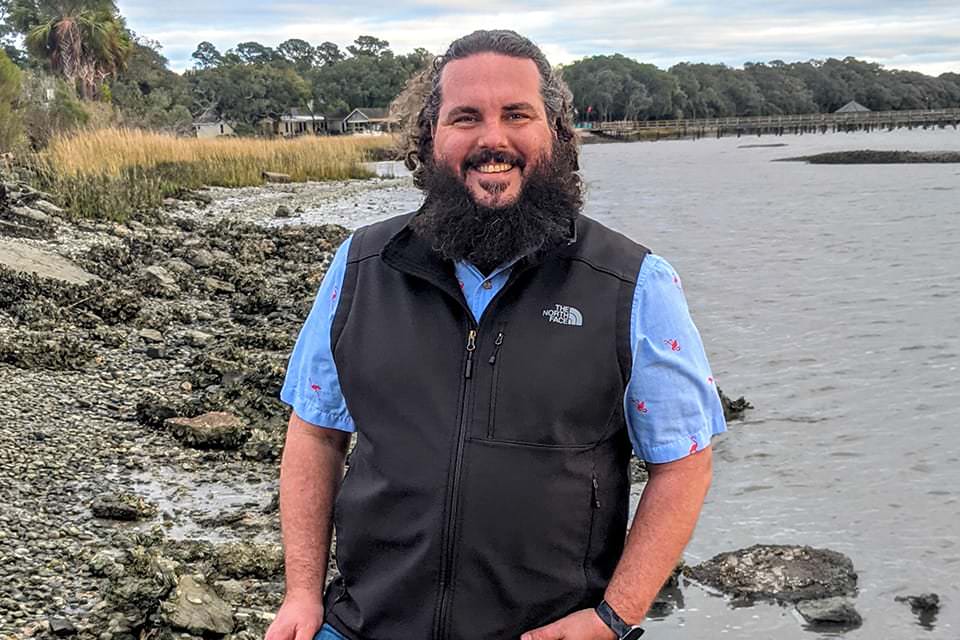
Rob Ferguson, a watershed management specialist with NOAA’s Coral Reef Conservation Program.
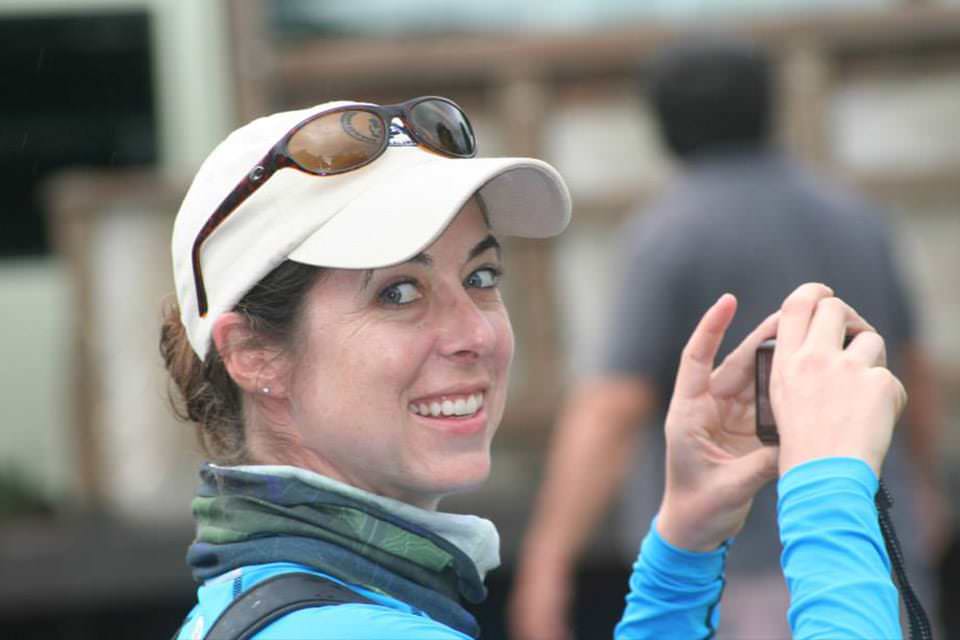
Lisa Vandiver, a Marine Habitat Restoration Specialist with NOAA’s Restoration Center.
Today we’ll be talking to Lisa Vandiver, a Marine Habitat Restoration Specialist with NOAA’s Restoration Center. Her work focuses on reducing the negative impact that pollution poses for coral reef habitats and the organisms it supports.
We’re also joined by Rob Ferguson, a watershed management specialist with NOAA’s Coral Reef Conservation Program. His work consists of providing technical assistance to minimize and mitigate the impacts of pollution to nearshore habitats throughout the nation’s seven coral jurisdictions in the Pacific and Atlantic/Caribbean Regions.
ROB - Thank you, Marissa for the opportunity for Lisa and I to meet with you today to discuss about our watershed restoration and planning work on Culebra.
HOST - Just a word of warning that we recorded this over the internet so the audio quality may be a bit spotty in places.
So let’s start with the basics.
Lisa and Rob, could you both give us the 30,000 foot view of why the NOAA Coral Reef Conservation Program is working to protect the coral reef habitats?
ROB - Healthy coral reefs are amongst the most biologically diverse, culturally significant, and economically valuable ecosystems on Earth. They provide billions of dollars in food, jobs, recreation, coastal protection, and other important goods and services to people around the world. According to the World Resource Institute, more than 60 percent of the world's reefs are under threat from local stressors, like fishing and more specifically which we’re going to talk about today, land-based pollution. That number jumps to 75 percent when local threats to reefs are combined with the threat of thermal stress from a changing climate. As a result, in the U.S. 22 species of coral are now listed as threatened under the Endangered Species Act. Given their incredible value, it is more important now than ever to address and reverse those threats impacting coral reef ecosystems. NOAA’s Coral Reef Conservation Program is leading efforts to study and conserve these precious resources for current and future generations.
LISA - Within NOAA’s Restoration Center, we work with local communities to protect and restore coastal habitats to boost fish populations, recover threatened and endangered species, and support resilient coastal communities.
HOST - I understand that threats to coral reefs can vary in size, such as global, regional or local, and they can also come from different sources like natural or manmade threats. What exactly are these threats and which ones are NOAA primarily focusing on?
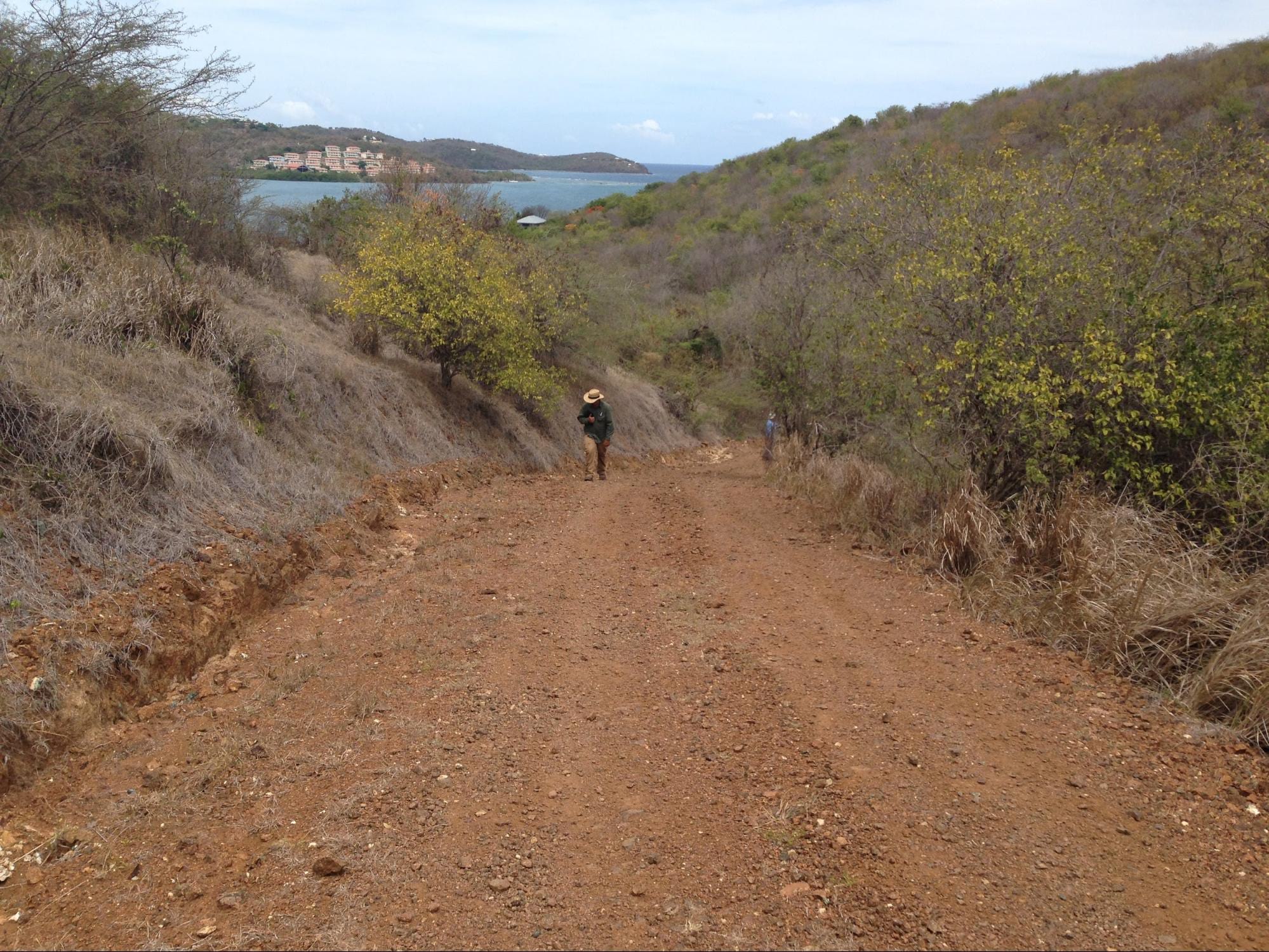
Unpaved road on the island of Culebra. Unpaved roads on the island are significant sources of sediment pollution to nearshore seagrass and coral reef habitats.
ROB - Localized, man made threats are typically the ones that are most easily managed and subsequently a priority for NOAA’s coral reef managers. On Culebra these localized, man made threats range from land-based sources of pollution, to unsustainable recreational use - which would include unsustainable fishing practices, as well as physical impacts from things like vessel groundings.
HOST - Lisa, What are land-based sources of pollution and how do they impact the coral reefs?
LISA - Land-based sources of pollution consist of a range of substances that, when they reach coastal waters, can have adverse impacts to coastal habitats like coral reefs. So this range of pollutants can be something as seemingly benign as sediment in large quantities to chemicals found in industrial waste sites. These pollutants can result in many coral reef impacts from construction sites or unpaved roads which can smother coral reefs and prevent new corals from growing. Or nutrients from fertilizer or undertreated sewage which can fuel algal blooms which block out light needed for coral reefs to thrive or even worse result in low oxygen levels.
HOST - Rob, why is it important to protect coral reef habitats in Culebra?
ROB - That’s a great question, Marissa. Healthy nearshore habitats are critical to Culebra for two key reasons, the first being that tourism is simply the economic backbone to the island’s economy. Tourists come to walk the white sandy beaches, snorkel with sea turtles, and dive the island’s coral reefs. Secondly, coral reefs and other nearshore habitats like mangroves help armor the island by dissipating wave energy during major storm events like Hurricane Irma and Maria in 2017, along with stabilizing shorelines that are constantly being eroded due to a rise in sea level. So, it is imperative to the residents along with the visitors that we protect Culebra’s nearshore resources.
HOST - Rob, could you also talk a little bit about how Culebra came to be a conservation priority for NOAA and the other federal and territorial agencies?
ROB - So back in 1983, the US Fish and Wildlife Service designated the main island of Culebra and 23 smaller islands in the area as the Culebra National Wildlife Refuge. To this day, it remains one of the oldest bird sanctuaries in the US. And then jumping forward a few years in 1999, Puerto Rico's Department of Natural and Environmental Resources designated the southwest portion of the island, known as the Canal Luis Peña as Puerto Rico’s first No-take reserve. So in 2010, NOAA and in partnership with Department of Natural and Environmental Resources identified Culebra island as a priority for coral reef conservation which spurred NOAA to begin investing in the region leading to the designation of the Habitat Focus Area as well as Department of Natural and Environmental Resources Marine Extension of the North East Ecological Corridor.
HOST - So Rob had just mentioned the term Habitat Focus Area. Could you explain a little bit more about that and its importance?
LISA - In 2014, NOAA developed a framework to enhance internal and external collaborations to more effectively address the growing challenge of coastal and marine habitat loss and degradation. As part of this, NOAA identified targeted geographic regions throughout the nation where they could focus their investments and collaborations with partners to provide measurable benefits to coastal and marine habitats and the resources and communities that depend on those habitats. These targeted places are known as NOAA’s Habitat Focus Areas or HFAs.
In 2015, Puerto Rico’s Northeast Marine Corridor and Culebra Island were selected as the Caribbean region’s Habitat Focus Area. This geographic region includes the north east corner of Puerto Rico and extends across a chain of islands known as Arrecifes de Cordillera to the easternmost point of Culebra. This location was chosen due to the high value ecosystems that support tourism, recreational, and commercial fisheries and the partnership opportunities that this location provided.
As a part of the habitat focus area, we developed an implementation plan in partnership with Puerto Rico’s Department of Natural and Environmental Resources. That plan was intended to support three main goals. Those goals being:
- One to Improve management to support resilience of coastal and marine habitats.
- Secondly, to increase the population, size, abundance, and health of endangered species act-listed coral species.
- And lastly, to sustain management of living marine resources dependent on coral reefs.
HOST - Who are some of the other partners that NOAA is working with in Culebra to implement projects?
LISA - Culebra is a unique community in that its residents are particularly passionate about ecological conservation. They actively work together to advance coral reef protection and restoration efforts. As a result, we have been fortunate to build off of existing local conservation groups like CORALations and Sociedad Ambiente Marino to develop and advance efforts to reduce pollution to coral reef habitats.
In our efforts to reduce land-based sources of pollution specifically, we have partnered closely with Horsley Witten Group and Protectores de Cuencas to develop and implement cost-effective watershed restoration projects to reduce pollutant threats on Culebra. Uniquely, not only have they been key to the technical success of our work, but Protectores de Cuencas in particular has been integral to developing the relationships and partnerships needed to build local capacity for watershed protection moving forward.
Protectores de Cuencas has forged relationships with U.S. Fish and Wildlife Services, U.S. Forest Service, Puerto Rico’s Department of Natural and Environmental Resources, Puerto Rico’s Aqueduct and Sewer Authority, the Municipality of Culebra, homeowners associations, and residents to enhance restoration outcomes and provide maintenance of the projects to assure long-term success of our investments. So overall, partners are key to our success here.
HOST - Why did NOAA choose the island of Culebra to be a focus for LBSP management?
LISA - Culebra was selected as a focus for our pollution management work because of two primary reasons.
First is the status of the ecosystem. In particular, Culebra, as a part of the Puerto Rico jurisdiction, has some of the highest quality coral reef habitat in the jurisdiction itself.
Second is the fact that the watershed itself is relatively small, so we felt that within NOAA that with a modest level of funding we could provide meaningful reductions in land based sources of pollution.
HOST - Rob, could you explain a little bit more about how NOAA is working to combat LBSP to nearshore habitats?
ROB - In 2013, NOAA working alongside a 501C3 non profit organization, Protectores de Cuencas which translates in English to watershed protectors, assess pollutant threats on the Island of Culebra. These threats ranged from sediments derived from unpaved roads and coastal development, to nutrients from failing septic systems and insufficient stormwater treatment.
This information was then used to identify and prioritize opportunities for watershed restoration to reduce pollutant sources within the watershed. In total, the restoration plan identified over 21 actions that can be taken throughout the island to reduce pollution sources and improve community stewardship of coastal resources. From this plan, NOAA and its partners prioritized funding of those actions they felt like they could provide meaningful progress towards reducing pollutant sources in the watershed. These actions include stabilizing bare soils and unpaved roads, stabilizing and reducing impacts to the coastal zone, enhancing stormwater treatment in areas prone to pollution, as well as working with Puerto Rico’s Aqueduct and Sewage Authority to design and implement tertiary treatment at the waste water treatment plant.
HOST - You had identified unpaved roads as threat. Could you explain why stabilizing them is important?
LISA - Research has shown that unpaved roads can produce between 10 to 100 times the amount of sediment than a natural forested landscape can. To date, Culebra consists of a network of over 50 miles of unpaved roads spread across a small island of less than 12 square miles. NOAA has prioritized the stabilization of 28 of those miles based on their erodibility and their likelihood of sediment delivery to coral reefs. Stabilizing a road can mean a lot of different things depending on the site.
For those unpaved roads that are greater than 20% slope oftentimes the most cost-effective and sustainable approach is simply paving the road. For some locations, there are multiple roads that lead to the same location, so we work with the homeowner to retire one of the roads and allow it to revegetate over time. Other more complicated sites require a range of best management practices or BMPs that remove concentrated runoff of the unpaved road to reduce erosion of the road, disperse the runoff throughout the landscape to allow natural infiltration of stormwater, and trap sediment at key points along the road.
Through NOAA’s investment alone, we have stabilized 15 miles of unpaved roads, preventing approximately 51 metric tons of sediment delivery to the nearshore coast per year. We have also recently acquired the remaining funding needed to stabilize all 28 miles of the priority of unpaved roads. Although this represents a great success, this island continues to face significant development pressure. In order for this effort to be successful, we will need to assure that future development does not create new sources of pollution that undermine the benefits achieved through this work and, most importantly, threaten the health of the surrounding coral reef habitat.
HOST - Does NOAA work with the inhabitants of Culebra to promote education and stewardship of the coral reefs?
LISA - Since the people living in a watershed are intricately linked to the creation of pollutant sources it is important to fund projects that increase people’s awareness of the threats that they may introduce to coral reefs and provide them information of how to reduce those threats to protect corals. To build community stewardship of coral reefs and build community capacity for protecting those reefs, we utilize multiple approaches including things like developing guidance manuals and standards for the unpaved roads, hiring local residents to enhance local capacity for building and maintaining these projects, but also through siting projects in highly visible areas to provide passive opportunities for education and outreach.
HOST: Lisa and Rob, thanks so much for talking with me today. It’s been fascinating learning about Culebra and the collaboration between NOAA and its partners to protect the coral habitats on this island. This is the NOAA Ocean Podcast. Thanks for listening — Be sure to check our show notes at the end of the podcast for links on how you can learn more about NOAA’s coral reef conservation and restoration efforts in Culebra and their work in preserving and conserving corals around the world. And subscribe to us in your podcast player of choice so you never miss an episode.
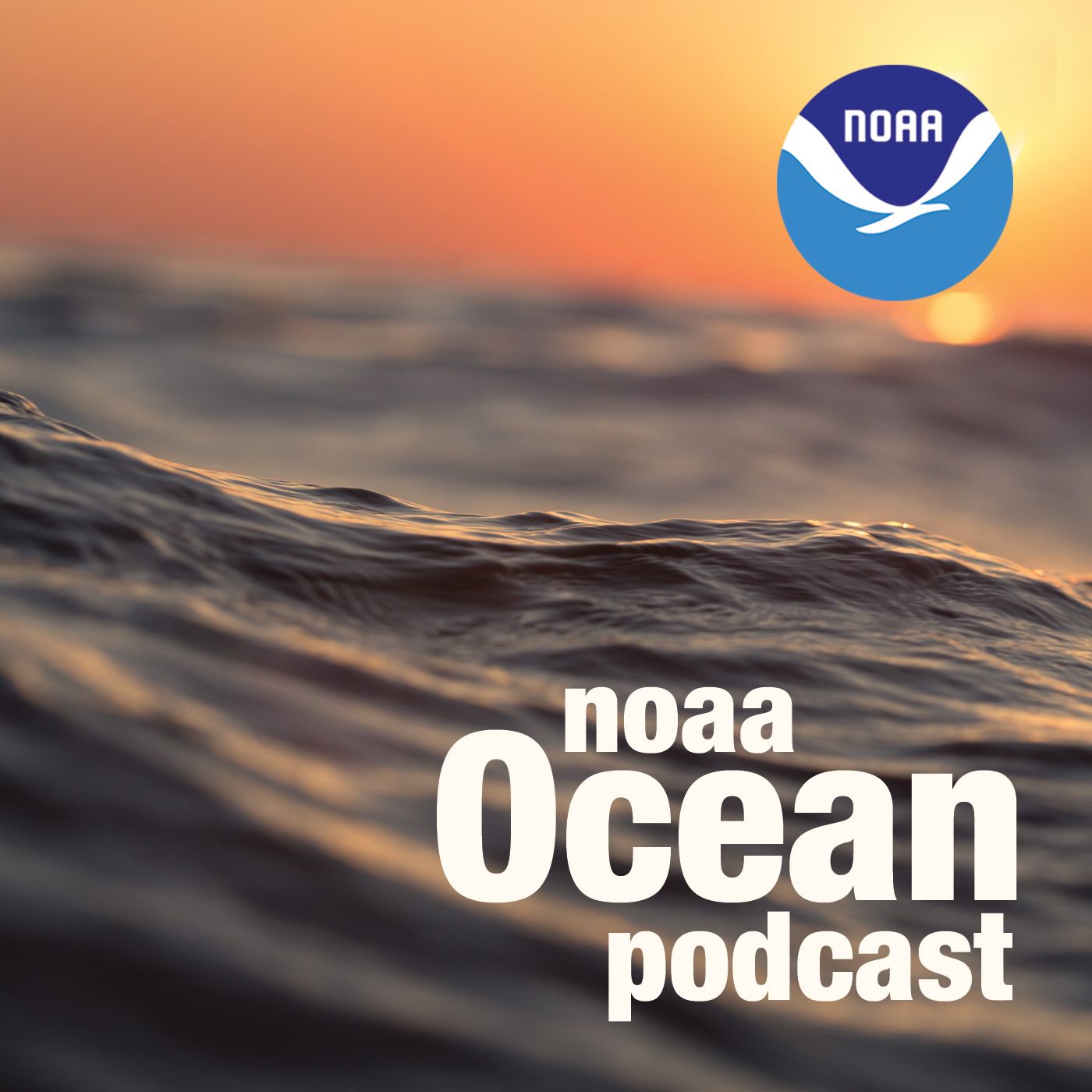
From corals to coastal science, connect with ocean experts to explore questions about the ocean environment.
Social